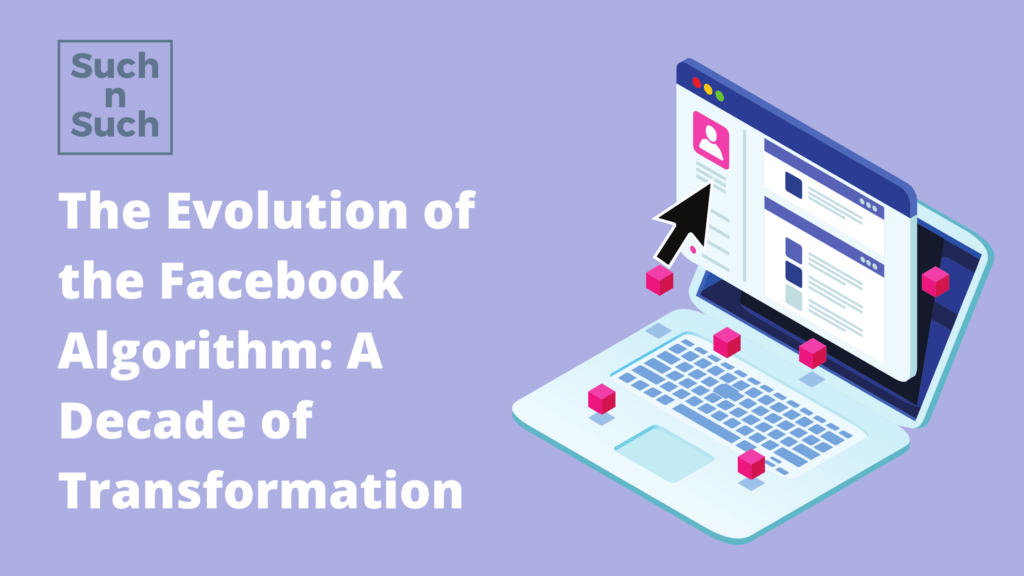
The Evolution of the Facebook Algorithm: A Decade of Transformation
Over the past decade, Facebook has undergone a remarkable transformation, not only in terms of its user interface and features but also in the underlying algorithms that govern our news feeds. The Facebook algorithm—the complex set of rules and processes that determine the content we see—has evolved significantly since its inception. In this blog, we will explore the key changes in the Facebook algorithm over the past 10 years and their impact on user experience.
The Chronological Feed Era (2010-2013):
In the early days of Facebook, the algorithm was straightforward—a chronological feed displaying content in the order it was posted. Users scrolled through their timelines, seeing updates from friends, family, and pages they followed in real-time. While this approach had its merits, as the platform grew, so did the volume of content, leading to challenges in keeping users engaged with relevant material.
Introduction of EdgeRank (2011):
In 2011, Facebook introduced EdgeRank, a precursor to the modern algorithm. EdgeRank assessed three key factors to determine the visibility of a post: Affinity (relationship between the user and the content creator), Weight (the type of content, e.g., photo, video, or text), and Time Decay (the recency of the post). This algorithm aimed to prioritize content that users were more likely to engage with, creating a more personalized experience.

The Rise of Content Quality (2014-2016):
In 2014, Facebook made a major algorithmic update that emphasized content quality over quantity. The platform began prioritizing posts that generated meaningful interactions, such as comments and shares, while demoting clickbait and low-quality content. This move aimed to enhance user satisfaction by ensuring that the content shown was more likely to be relevant and engaging.
One of the most notable changes in the past decade has been the increasing prominence of video content. In 2015, Facebook introduced autoplay videos, a feature that automatically played videos as users scrolled through their feeds. This move was in response to the growing popularity of video content on the platform.
With the advent of Facebook Live in 2016, the algorithm adapted to prioritize live videos, further encouraging users and brands to embrace this dynamic format. Video content became a powerful tool for engagement, offering a more immersive and interactive experience for users.

Emphasis on Friends, Family, and Reactions (2016):
Recognizing the importance of personal connections, Facebook adjusted its algorithm once again in 2016. The platform began prioritizing content from friends and family over posts from publishers and brands. This change aimed to enhance the user experience by fostering meaningful interactions and reducing the impact of clickbait and sensationalist content.
In efforts to emphasize connections, Facebook expanded beyond the traditional “Like” button by introducing Reactions—Love, Haha, Wow, Sad, and Angry. This addition allowed users to express a wider range of emotions in response to posts. The algorithm started taking these varied reactions into account, providing a more nuanced understanding of user preferences and enabling more personalized content recommendations.
The Fight Against Clickbait: Quality over Quantity (2017):
As the platform matured, Facebook took steps to combat clickbait and low-quality content. In 2017, the algorithm underwent further refinement to prioritize content that sparked meaningful interactions and discouraged engagement-baiting tactics. This change aimed to foster genuine connections and interactions among users while diminishing the visibility of spammy or sensationalist content.
The Push for Meaningful Social Interactions (2018):
Acknowledging concerns about the negative impact of passive content consumption, Facebook pivoted towards prioritizing “meaningful social interactions.” The algorithm was adjusted to give precedence to posts from friends and family, as well as those sparking conversations and connections. The goal was to foster more genuine interactions and strengthen the sense of community on the platform.
The Battle Against Fake News (2019)
With the rise of misinformation, Facebook intensified its efforts to combat the spread of fake news. The algorithm underwent further modifications to identify and reduce the visibility of false or misleading content. This involved collaboration with fact-checkers and the implementation of measures to limit the virality of such content.

Navigating the COVID-19 Pandemic
The year 2020 brought unique challenges with the global COVID-19 pandemic. Facebook adapted its algorithm to address the influx of pandemic-related content, ensuring reliable information was prioritized. The platform also made efforts to connect users with authoritative sources, aiming to combat the spread of misinformation during a critical time.
Current State: Personalized Feeds and AI-Powered Recommendations (2020-Present):
In recent years, Facebook has harnessed the power of artificial intelligence to deliver even more personalized content. The algorithm now considers a myriad of factors, including user behavior, interests, and past interactions, to create individualized feeds. This approach ensures that each user’s experience is unique, with the algorithm learning and adapting over time to deliver content that aligns with evolving preferences.
Where Are We Heading?
As we reflect on the dynamic journey of the Facebook algorithm over the past decade, one can’t help but wonder about the future of this ever-evolving digital landscape. The question that lingers is: How will the Facebook algorithm change in the years to come? With advancements in artificial intelligence, machine learning, and a growing emphasis on user-centric experiences, the possibilities are vast. Facebook’s commitment to adapting its algorithm to meet the changing needs and expectations of its user base suggests a future where personalization and relevance will play an even more pivotal role. The unfolding chapters of the algorithm’s evolution are poised to shape the future of digital interaction, sparking curiosity about the next innovations that will redefine how we engage with content in the years to come.










